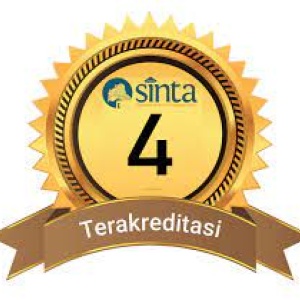Hikayat Susunan Kuning dalam Negeri Gagelang: Sebuah Tinjauan Historiografi
DOI:
https://doi.org/10.37014/jumantara.v11i1.640Keywords:
Sunan Kuning, Geger Pacinan, Chinese, Colonial, and HistoriographyAbstract
This study aims to present a historiographic review of the text of the Yellow Tale in the State of Gagelang (hereinafter abbreviated as HSK). This research uses the historical method. The steps used in this study are (1) heuristics; (2) criticism; and (3) historiography. The results of research on this study are known that (1) In the text HSK tells about Sunan Kuning to his descendants and various conflicts in it; (2) The history of the tumult not only describes the conflict between Java and China, but also indicates the interference of the Dutch colonial involvement in it; (3) The relevance between the HSK text and the history of Pacer commotion. The relevance is illustrated by the existence of relevant and interrelated events between the HSK text and the history of Pacer commotion. During this time, the discourse that continues to be "echoed" by the colonial side is the commotion of Chinatown is a dark history for humanity in the archipelago. In fact, the discourse continues to be reproduced when various riots erupted in the country. The discourse that is raised is always based on ethnicity, religion, race, and intergroup. Thus, the presence of the HSK text is an important witness for the history of humanity on earth in the archipelago. In addition, HSK also uses the background of the banner story. It shows that history is not always written by "winners". Because the banner story is a folklore that is so closely related to the life of the Indonesian people. Therefore, a comprehensive and integral study of HSK and other historical texts is absolutely necessary to be carried out in order to reveal the true historical facts. So, Indonesian people can re-recognize the history of their ancestors, both through colonial sources and from the perspective of the nation's own historiography.References
Abdurrahman, Ja'in. 1820. Hikayat Susunan Kuning Dalam Negeri Gagelang. Leiden: University Of Leiden. https://digitalcollections.universiteitleiden.nl/islandora/object/item:2022225#page/1/mode/1up.
Abrar, Ana Nadhya. 2010. Bagaimana Menulis Biografi: Perspektif Jurnalisme. Yogyakarta: Emerson.
Anonim. 1820. Hikayat Sunan Kuning. Leiden: Leiden University.
Baroroh-Baried, Siti, Et.al. 1994. Pengantar Teori Filologi. Yogyakarta: Badan Penelitian dan Publikasi Fakultas Seksi Filologi Fakultas Sastra Universitas Gadjah Mada.
Daradjadi. 2017. Geger Pacinan 1740-1743: Persekutuan Tionghoa-Jawa Melawan VOC. Jakarta. Jakarta: Kompas Media Nusantara.
Kian, Kwee Hui. 2008. "How Strangers Became Kings: Javanese-Dutch Relations in Java 1600-1800." Indonesia and the Malay World 36 (105): 293-307. https://doi.org/10.1080/13639810802268064.
Kuntowijoyo. 2003. Metodologi Sejarah. Yogyakarta: Tiara Wacana.
Ricklefs, M.C. 1983. "The Crisis of 1740-1 in Java: The Javanese, Chinese, Madurese and Dutch, and the Fall of the Court of Kartasura." Bijdragen Tot de Taal-, Land- En Volkenkunde / Journal of the Humanities and Social Sciences of Southeast Asia 139 (2): 268-90. https://doi.org/10.1163/22134379-90003445.
Rustopo. 2007. Menjadi Jawa: Orang- Orang Tionghoa Dan Kebudayaan Jawa Di Surakarta 1895-1998. Yogyakarta: Ombak.
Sukirni, Sri. 2017. "Permukiman Tionghoa Di Surakarta Pada Tahun 1900-1940." Prodi Ilmu Sejarah Fakultas Ilmu Sosial Universitas Negeri Yogyakarta. https://eprints.uny.ac.id/53363/6/E-Jurnal 13407144031.pdf.
Varlord. 2014. "Apakah Arti Dari VOC - Brainly.Co.Id." 2014.
Wijayakusuma, Hembing. 2005. Pembantaian Massal 1740. Jakarta: Yayasan Pustaka Obor Indonesia.
Wirajaya, Asep Yudha. 2007."Hakikat Sastra." Surakarta.
Wirajaya, Asep Yudha. 2019. "Metodologi Penelitian Sejarah." Surakarta.
Witkam, Jan Just. 1998. Catalogue Inventory Of The Oriental Manuscripts Of The Library Of The University Of Leiden. Leiden: Lugt Press Leiden.
Downloads
Additional Files
Published
Issue
Section
License
Copyright (c) 2020 Jumantara: Jurnal Manuskrip Nusantara

This work is licensed under a Creative Commons Attribution-ShareAlike 4.0 International License.
- This statement is the author's commitment to respect copyright, both in terms of citing other people's work and utilizing journal content. If necessary, the author can send an Authenticity Statement of Article stating that "this work is the author's original idea and has never been sent to another publisher and published in any publication"
- The author retains copyright.
- The moral rights of publication belong to the author.
- Formal legal aspects in the use of journal publications refer to the Creative Commons Attribution-ShareAlike 4.0 (CC BY-SA) license, which means that journal content can be used freely for any purpose.









